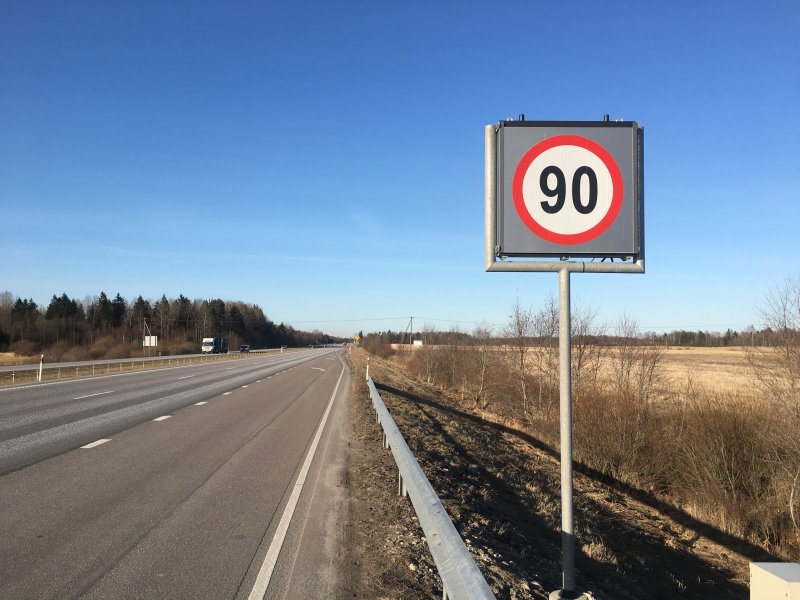
Today, November 19, road signs for the maximum permissible summer speed of 110 km/h will be removed on Estonian national roads, and lower winter speed limits will apply. The weather conditions have changed to winter and there is a risk of slippage on the roads.
100 km/h remains the speed limit on sections of 2+1 and certain 2+2 roads. A higher speed is established in those places where the traffic environment is ready for it. In those sections where there is a greater risk of accidents involving wild animals and pedestrians, the speed will be kept at 90 km/h for the winter. On road sections with traffic signs with variable information, the maximum permitted driving speed is set to 110 km/h during daylight hours in good driving conditions.
“It is important for road users to remember that the highest permitted speed limit is not always a safe speed. You have to monitor the road and driving conditions and choose the corresponding speed,” said Siim Vaikmaa, head of the Traffic Management Center of the Transport Board. “In winter road conditions, it is worth avoiding overtaking, but if it is necessary to do so, it should be taken into account that overtaking can take significantly more time, and since overtaking lanes are limited in length on 2+1 roads, this dangerous maneuver should be avoided. Even on 2+2 roads, the slipperiness of the road surface can be different in different lanes when overtaking.”
On the Laagri-Ääsmäe section of the Tallinn–Pärnu–Ikla highway, on the Peetri–Mäo section of the Tallinn–Tartu–Võru–Luhamaa highway, and on the Väo–Kanama section of the Tallinn ring road, the Traffic Management Center of the Transport Board has the right to establish a maximum permitted speed of up to 110 km/h with traffic signs with variable information in good driving conditions on white and up to 100 km/h in the dark. Driving conditions are determined taking into account the measurement results of road weather stations located in the area.
For the winter, the speed limit will be up to 110 km/h on a total of 250.3 kilometers and 100 km/h on a total of 108.3 kilometers.
The speed must be reduced, because the drop in temperatures leads to a greater risk of slippage. In order to reach the destination safely, drivers must choose a driving speed and a safe driving style according to the road conditions. A slippery road in winter requires greater attention from drivers and consideration for other road users. In addition to possible slippery conditions, the high proportion of dark hours also makes driving more dangerous.
Before starting the journey, it is worth checking the road conditions on the portal Tark Tee.
In addition, the agency reminded that all passenger cars must have winter tires on them by December 1 at the latest.
Source: online.le.ee


